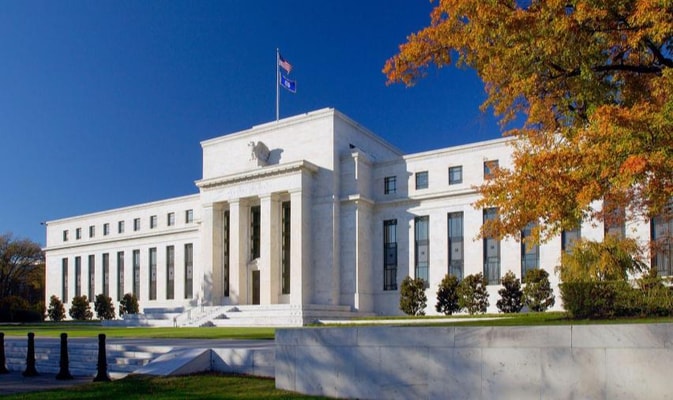Where will US rates consolidate?

16 APR, 2024
By Mauro Valle from Generali Investments

- Last US CPI data confirmed the disinflation trend is stalling and the FED could be forced to change its stance; US rates could consolidate in the next days over the 4.5%.
- Lagarde confirmed that in June they could cut rates, but a less dovish FED won’t be irrelevant for the ECB; Bund rates are expected to continue to move in the actual range.
- Portfolios are always long relative durations, with a neutral exposure to Germany and long Italy; short- medium maturities are overweighted.
- In this scenario, the market is reassessing the Fed's cutting cycle: very low probability of seeing a cut in June and only 2 cuts in January.
- Bund rates move consistently around 2.4%, supported by rising US rates, despite the ECB's pessimistic stance and falling inflation.
In the last week the Treasury rates moved from 4.3% to 4.6% , after stronger than expected CPI data. The real rates increased around 20 bps, arriving at 2.20%, while the break even rates went over the 2.40% level. To note also the upward movement of the 2 years break even rates that are peaking at 2.94%, when they stand at 2.0% the beginning of the year. Both headline and core inflation came out 0.1% higher than expectations, confirming that the inflation declining trend is stalling. Also the March retail sales were clearly positive (control group +1.1% vs 0.4% forecasts). These positive data are following the previous strong ISM man. (50.3 vs. 48.3 cons.) and the blockbuster labour market report (NFP +303). In this scenario market is repricing the FED cutting cycle: very low probability to see a cut in June and only 2 cuts priced within January. Probabilities that Powell will delay cuts is concrete at this point, and he could think to wait the summer break to assess the situation: to see if two cuts (September and December will become FED central scenario in the next meeting). Not easy at the moment to identify a new fair level for the US 10 years rates, we are supposing that in the short term US rates could consolidate over the 4.5%. Regarding yield curve, it’s always inverted -30 bps, and expectations has always been for a bullish steepening: if economic scenario will continue to be so positive the inverted curve makes little sense and we cannot exclude a bearish steepening trend.
The Bund rates are always moving in the range around 2.4%, supported by higher US rates, despite a dovish ECB and declining inflation. German break even rates moved 10 bps higher in April, now at 2.16% but 5Y5Y inflation expectations quite stable at 2.35%. Euro inflation eased by more than expected to 2.4% (core 2.9%) in February, PMI was revised upward, retail sales were poor: the economic data for Eurozone are weak and Lagarde confirmed a scenario disinflationary enough (wage growth was “gradually moderating”) to cut rates in June. She stressed ECB is data dependent and not FED dependent. We are expecting a first cut in June (market is pricing a 90% probabilities), but a different FED stance will be not indifferent for them and could slow down the cutting cycle. The view remains positive for bund rates close to 2.5% level. A more neutral level could be the area 2.0% - 2.2%. The yield curve (10-2 years) is always inverted around -45 bps and it is always expected to tighten. The Bund-BTP spread is moving around the 140 bps: we confirm a positive view and for the next days we are expecting it could move in the range 125 bps - 145 bps.
The portfolios didn’t change their allocation in the last days, confirming the long relative duration exposures. German bonds are managed around a neutral exposure; Italian BTPs are always overweight, together with Spain and Greece. The exposures on the yield curve is always long up to the 10 years maturities and underexposed to the long end. The portfolios will continue to implement a long relative duration strategy, waiting for a retracement of core rates around / below the 2.2% area. The BTPs exposure will continue to be overweighted.
Related articles
 This is how the deposits that the Argentarii, the ‘bankers’ of Ancient Rome, offered to their clients worked
This is how the deposits that the Argentarii, the ‘bankers’ of Ancient Rome, offered to their clients workedBy RankiaPro Europe

